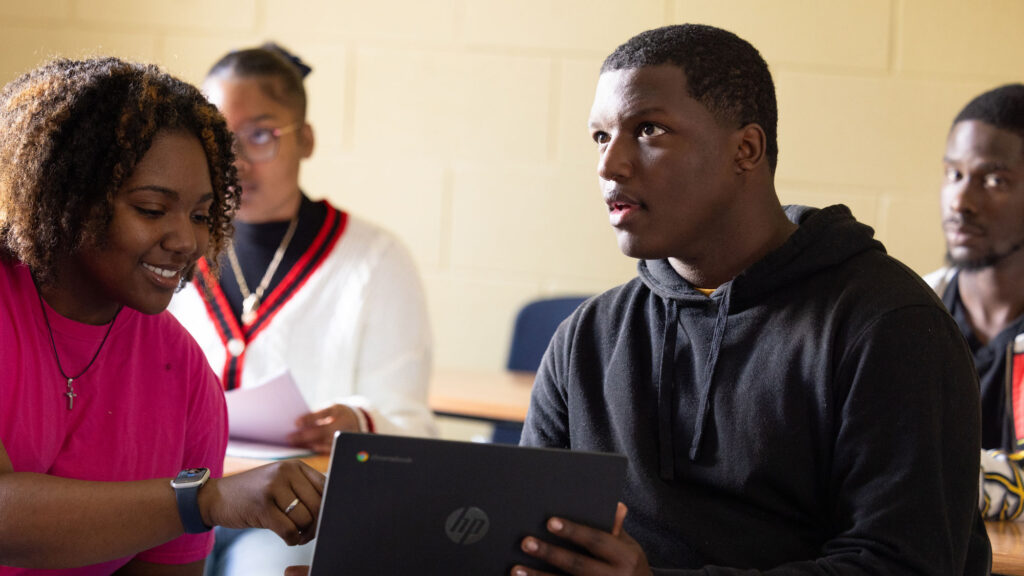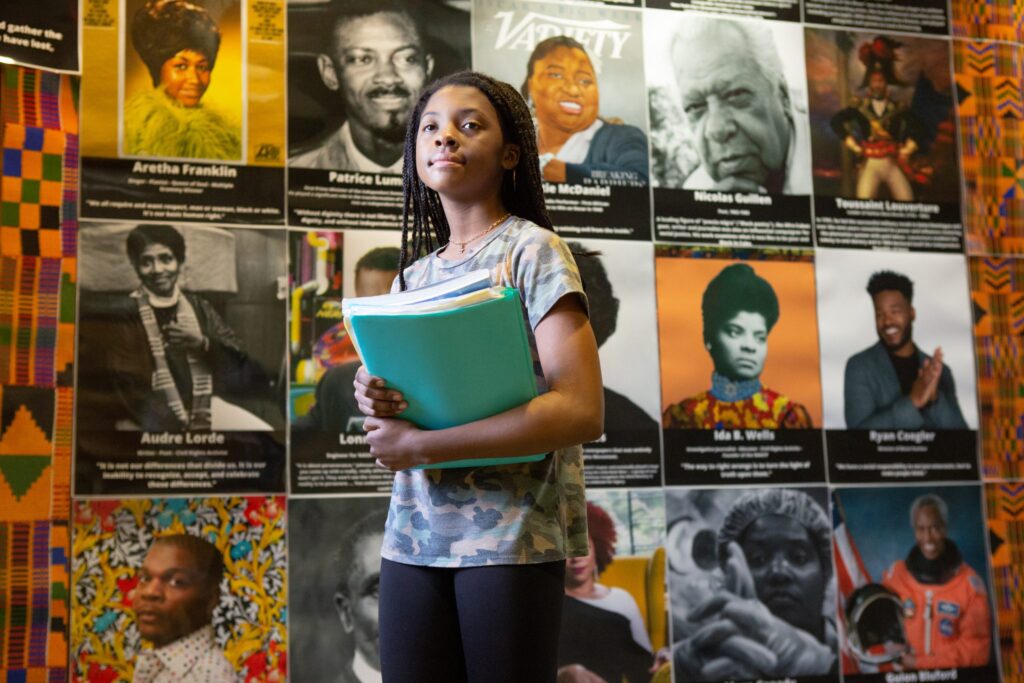José Lopez-Garcia discovered a passion for teaching when he took a position with AmeriCorps as an after-school program instructor. Though he had to sign up for food stamps to make ends meet, he loved working with the children he considered part of his community. “I wanted to work with the immigrant community, and I got to use my Spanish. Even as an after-school teacher, I felt like an ingrained part of the community.”
José went on to become a supervisor. However, he soon realized he wanted to return to a role that allowed him to work directly with students and have a more direct impact on their learning. “I wanted to expand my role. I was good at it, and I enjoyed supporting students with their homework and enjoyed learning from the [classroom] teachers, but I wanted to drive students’ learning and have more of a role in supporting academics and social-emotional progress.” That’s when he heard about the Oakland Unified School District’s (OUSD) Afterschool-to-Teacher program, which supports after-school program staff to pursue a career in teaching by providing them with test preparation, credentials counseling, advocacy, cohort support, and a small stipend — all which José felt were instrumental getting him set on the path toward earning his teaching credential.
Research shows the importance of having a diverse teacher workforce that reflects the racial and ethnic demographics of today’s student body. As schools and districts currently face dire teacher shortages across the country, the search for solutions to these staffing challenges becomes more urgent. But there are systems already in place—they just need to be tapped into more. “Grow Your Own” (GYO) teacher programs have become popular in large, urban districts like Oakland Unified. These kinds of programs open doorways for aspiring educators from local communities who often have strong ties to the students they would serve in the classroom. Ed Trust’s recent report, A Natural Fit: Supporting After-School Staff of Color in Teacher Pipelines provides insight into how teacher preparation programs and state policymakers can create the right programmatic experiences and conditions to recruit after-school staff into the teaching profession and have them succeed.
California is one state that is making strides in educator diversity in part through GYO programming. In Oakland, the after-school staff is often more representative of the populations they serve than the national average. For example, at one school that serves mostly students of color, the teaching faculty only has 16% people of color — whereas the after-school staff is comprised of 100% people of color. This trend is seen across the district in varying degrees. Additionally, most staff members have grown up in the same communities and have had similar experiences as the students they serve. Combined with the opportunity for student-centered activities based on interests, youth leadership, and developing relationships, this experience is incredibly empowering for students.
It’s easy to view such a pathway as being one-directional, where candidates enter the after-school program and exit soon after to teach in the classroom. But a truly functional pathway takes into consideration that a portion of after-school staff will most likely move on within a few years to seek more sustainable income (particularly in the Bay Area, where the cost of living is high), and channel them into a longer career trajectory within the field of education. This offers an opportunity for after-school programs to reframe their purposes to include the support and development of early educators. This way, after-school staff positions could be recast from temporary jobs to opportunities for teacher development and preparation, which can lead to greater opportunities for growth and advancement.
There is also the opportunity here for intentional partnership and collaboration among school staff and after-school program staff—including observations and feedback, mentorship, collaboration around curriculum development, and alignment of support for students from the day classroom to the after-school classroom, to name a few. Principals can work closely with program leaders to integrate after-school staff into other positions throughout the school day that can help them build necessary skills for classroom teaching, i.e., academic support or reading intervention. This also helps identify individuals who would be well suited for the classroom. Having a first-year teacher who already knows the community and has fostered relationships with faculty and families is invaluable — not to mention all the practical experience after-school staff bring with them from the field of youth development.
After-school staff members are prime candidates to become teachers because their work experience is intentionally focused on youth voice, active engagement, hands-on project-based learning, and cultivating youth interests with goals of uplifting their community. After-school programs have the potential to create a different narrative of outcomes for students, who bring their interests and talents to the forefront and bring their families together to celebrate who they are and what they love beyond academics. Having this same support in the classroom with a teacher who “gets” them is the key to student success.
One crucial piece of a GYO program is, of course, sustainable funding. While the original funding for OUSD’s Afterschool-to-Teacher program is sunsetting, recent expansions in state funding allows the District to fold in after-school program employees into a current pathway funding, allowing us to build on initial successes and to fill this crucial need in the educator workforce. Other states and school districts should absolutely follow suit —because having more teachers of color benefits all students, regardless of race or ethnicity. Ultimately, the goal of any school should be to cultivate a sense of belonging and to encourage students to be their authentic selves by providing them opportunities to do so and by prioritizing social, emotional and academic development through strong relationships and community building. This commitment to relationship-building as a core tenant, not as a byproduct, is a powerful mindset for anyone who aspires to go into classroom teaching. After-school staff members already have that passion — so let’s cultivate it.
Soo Hyun Han-Harris is the coordinator for retention and employee development at Oakland Unified School District
Priscilla Parchia is the program manager for Expanded Learning ExLO at Oakland Unified School District







